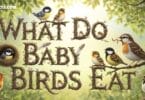
Do Birds Have Teeth?
Have You Ever Paused While Watching A Bird Eat And Asked Yourself “Do Birds Have Teeth?” It’s One Of Those Curious Little Questions That Can Suddenly Take Over Your Thoughts. You See Them Pecking At Seeds Tearing Through Fruits Or Catching Insects In Midair And It Almost Feels Like They Should Have Tiny Teeth Hidden Behind Their Beaks But The Truth Is Birds Don’t Have Teeth At All And Yet They Manage To Eat Hunt And Survive Perfectly.
Instead Of Teeth Birds Rely On Their Strong Specially Shaped Beaks And A Powerful Stomach Called A Gizzard That Helps Grind Food Into Smaller Pieces. Thinking About It It’s Amazing How Evolution Has Given Them Clever Tools To Thrive Without Biting So If You’ve Ever Wondered “Do Birds Have Teeth?” You’re Not Alone and Learning The Answer Gives You A New Appreciation For These Fascinating Creatures Every Time You See Them In The Wild Or Your Backyard.
Do Birds Have Teeth?

Close-up Of A Parrot Using Its Beak To Crack A Nut Showing How Birds Eat Without Teeth.
Birds Are Some Of The Most Fascinating Creatures On Earth Their Ability To Fly Sing And Adapt To Diverse Environments Never Fails To Amaze Us But One Question Often Comes Up: Do Birds Have Teeth? At First Glance It Might Seem Like They Should. Parrots Crack Nuts Eagles Tear Meat And Ducks Appear To Chew Their Food All Of Which Look Like The Work Of Teeth. However The Simple Answer To Do Birds Have Teeth Is No. Modern Birds Do Not Have Enamel Coated Teeth Like Mammals Such As Humans Dogs Or Lions. Instead They Have Evolved Beaks That Serve As Highly Specialized Tools Acting Like Knives Scissors Or Pliers To Grab Cut Crush Or Sip Their Food.
Even Though Birds Don’t Have Teeth Evolution Has Given Them Other Clever Ways To Process Food. Their Beaks Tongues And Stomachs Have Adapted Over Millions Of Years To Make Chewing Unnecessary. Some Species Even Swallow Small Stones To Grind Food In Their Gizzards. Understanding Do Birds Have Teeth And How Birds Compensate For This Absence Offers Fascinating Insight Into Evolution This Article Will Explore Everything From Ancient Birds With Real Teeth To Modern Adaptations That Help Them Thrive Without Ever Needing One.
How Birds Eat Without Teeth
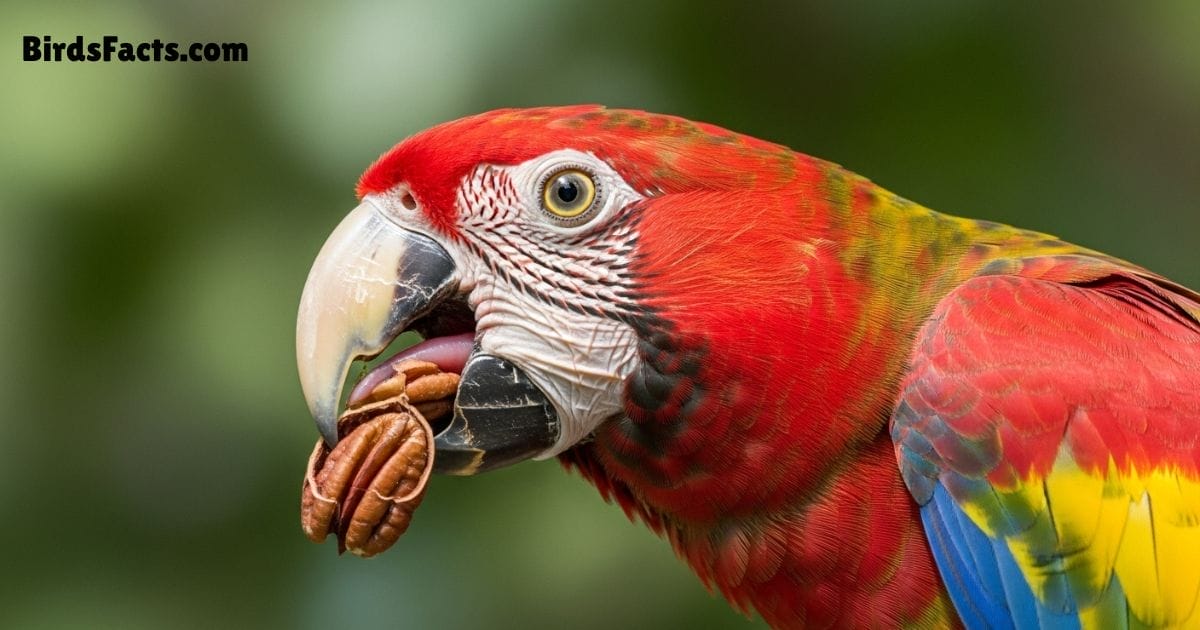
“parrot Using Its Strong Curved Beak And Tongue To Crack A Nut Showing How Birds Eat Without Teeth.”
If You Are Wondering Do Birds Have Teeth The Answer Is No But That Doesn’t Mean They Struggle To Eat. Birds Have Developed A Unique System That Allows Them To Handle All Kinds Of Food Without Chewing. Their Beaks Tongues And Specialized Stomach Structures Take Over The Job Of Teeth. The Beak Is The Primary Tool Birds Use To Eat. Its Shape Varies Depending On The Diet. Parrots Have Strong Curved Beaks For Cracking Nuts While Hummingbirds Have Long Narrow Beaks For Sipping Nectar. Hawks And Eagles Have Hooked Beaks To Tear Flesh. Each Beak Is Perfectly Adapted Acting Like A Natural Knife Or Pliers Compensating For The Absence Of Teeth.
The Tongue Also Plays A Crucial Role. It Helps Move Food Toward The Throat And Can Even Capture Prey. Woodpeckers For Example Have Long Sticky Tongues To Extract Insects From Deep Inside Tree Bark Ducks Use Flat Tongues With Small Bristles To Filter Food From Water. The Tongue Ensures Food Is Directed Safely Into The Digestive System. Inside The Body The Crop Stores Food Temporarily Before Digestion. This Allows Birds To Eat Quickly And Then Process The Food Later When Safe. Finally The Gizzard Grinds Food Efficiently — Birds Often Swallow Tiny Stones That Stay In The Gizzard Acting Like Natural Teeth To Crush Seeds Nuts And Other Hard Foods. So Even Though Do Birds Have Teeth Might Sound Like A Simple Question The Answer Reveals A Fascinating System Built For Survival. Through All These Adaptations Do Birds Have Teeth Becomes Less About Absence And More About How Nature Finds Remarkable Ways To Replace What’s Missing.
Types of Beaks and How They Replace Teeth

Illustration showing different types of bird beaks: seed-cracking, insect-catching, nectar-sipping, meat-tearing, filter-feeding, and crushing beaks, replacing the function of teeth.”
Even Though Birds Do Not Have Teeth Their Beaks Are Specialized To Replace Them. When People Ask Do Birds Have Teeth They Are Often Surprised To Learn That Beaks Can Perform Most Functions That Teeth Would From Cracking Seeds To Tearing Flesh.
- Seed-eating Beaks Are Short And Cone-shaped Ideal For Finches Sparrows And Cardinals. These Birds Can Crack Hard Seeds Efficiently. Their Beaks Act Like Natural Nutcrackers Performing A Job That Teeth Would Normally Do In Other Animals.
- Insect-eating Beaks Are Thin And Pointed Perfect For Warblers Swallows And Flycatchers. These Birds Snap Up Insects Quickly And Swallow Them Whole. Teeth Are Unnecessary Because The Beak’s Design Allows For Precision Hunting.
- Nectar-feeding Beaks Are Long And Narrow Like Those Of Hummingbirds. These Beaks Help Sip Nectar Deep Inside Flowers. Teeth Would Interfere With Feeding So Evolution Replaced Them With Specialized Beaks That Perfectly Suit Their Diet.
- Meat-tearing Beaks Are Sharp And Hooked Seen In Eagles Hawks And Falcons. Their Beaks Work Like Knives And Scissors To Tear Flesh. When Asking Do Birds Have Teeth These Birds Are Often The Ones People Imagine But Their Hooked Beaks Are All They Need.
- Filter-feeding Beaks Are Broad And Flat Like Ducks And Flamingos. Tiny Comb-like Edges Called Lamellae Act Like Built-in Strainers Helping These Birds Separate Food From Water. These Ridges Are Tooth-like Adaptations Without Being Actual Teeth.
- Finally Crushing Beaks In Parrots And Macaws Are Extremely Strong. They Can Break Hard Shells And Nuts With Ease. Evolution Has Made Their Beaks More Efficient Than Any Set Of Teeth Could Be Showing How Versatile Toothless Adaptations Can Be.
Ancient Birds With Teeth – Fossil Evidence
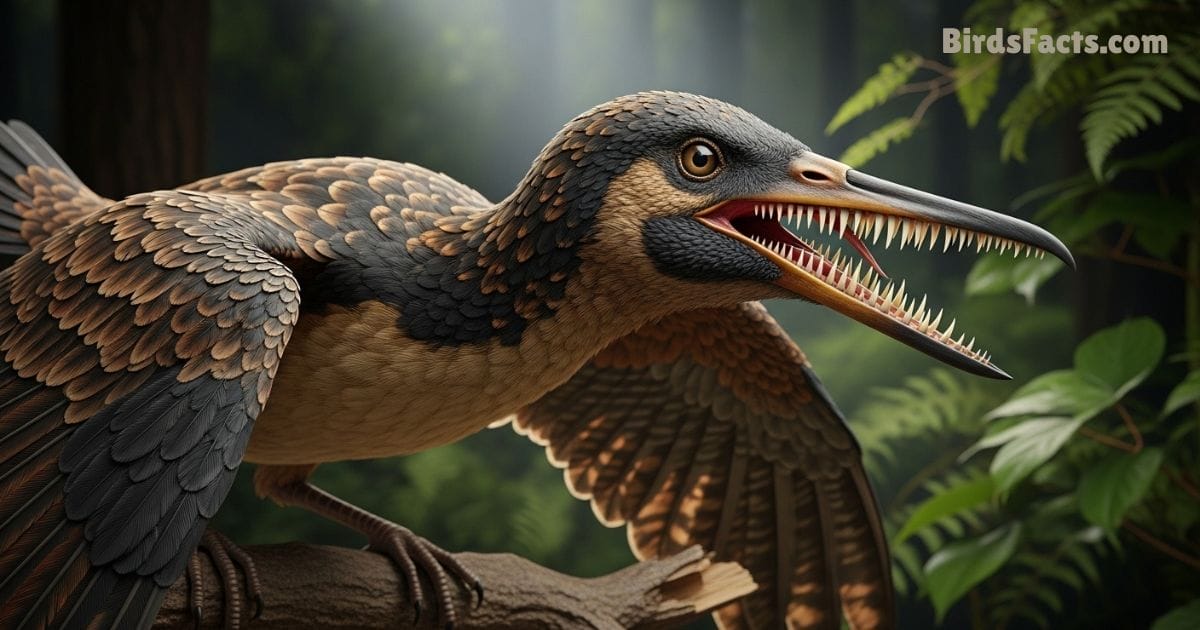
_“Fossil of Archaeopteryx, an ancient bird with teeth, showing the evolutionary link between dinosaurs and modern birds.
To Answer The Question Do Birds Have Teeth We Need To Look Far Back In Time millions Of Years Into The Past Fossil Discoveries Show That Many Ancient Bird Species Did In Fact Have Teeth These Early Birds Help Scientists Understand How Modern Birds Evolved From Their Dinosaur Ancestors One Of The Most Famous Examples Is Archaeopteryx Which Lived About 150 Million Years Ago. It Had Feathers And Wings Like Birds Today But Its Jaw Contained Sharp Teeth. This Mix Of Reptile And Bird Features Shows That Teeth Were Once An Essential Part Of Early Bird Anatomy.
Another Prehistoric Bird Hesperornis Lived Around 80 Million Years Ago And Was Adapted To Life In The Water Unlike Ducks Or Geese It Had Long Pointed Teeth Used For Catching Fish Fossils Of Hesperornis Reveal How Teeth Helped Ancient Birds Feed Before Beaks Evolved. Ichthyornis Another Ancient Seabird Had Powerful Wings For Flying And Rows Of Teeth In Its Jaws. Its Fossils Show That The Change From Toothed Jaws To Modern Beaks Happened Slowly Over Time. Eventually Evolution Favored Toothless Beaks Giving Rise To The Wide Variety Of Efficient Feeders We See Today proof That The Answer To Do Birds Have Teeth Is Hidden Deep In The Story Of Their Evolution.
Tooth-like Features in Modern Birds
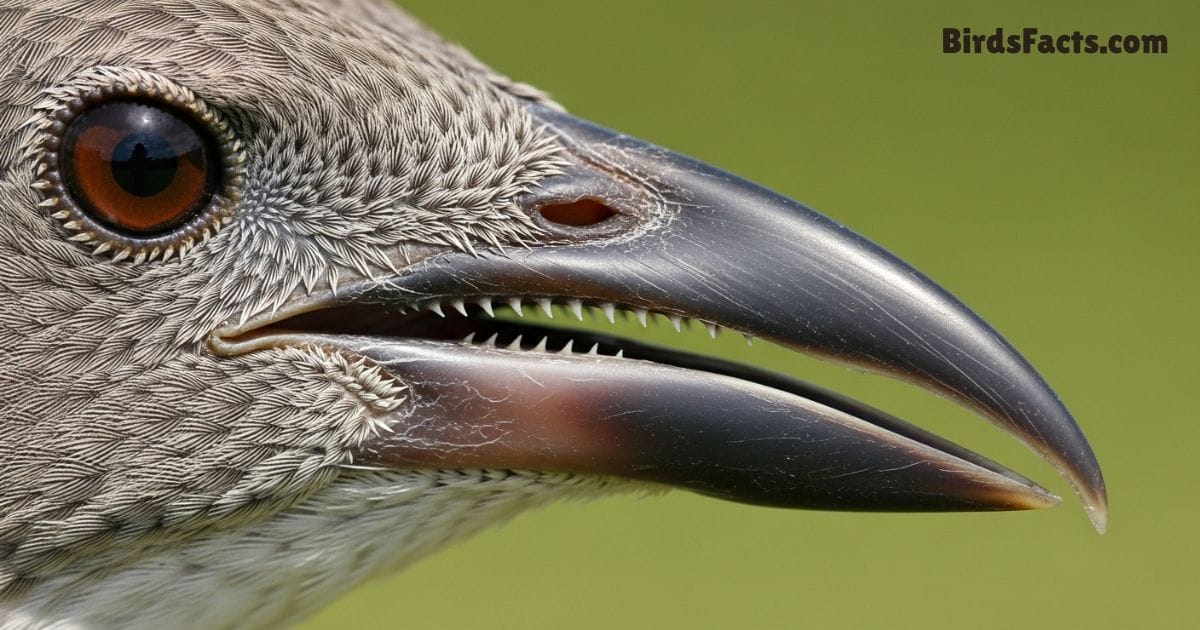
“Close-up of a bird’s beak showing tooth-like features such as lamellae or serrated edges, demonstrating adaptations that replace teeth.
While Modern Birds Do Not Have True Teeth Some Species Have Features That Resemble Them When People Ask Do Birds Have Teeth These Adaptations Often Cause Confusion. These “tooth-like” Structures Help Birds Feed Effectively And Survive In Many Environments. One Example Is The Egg Tooth A Small Sharp Bump On A Baby Bird’s Beak That Helps The Chick Crack Open The Eggshell During Hatching. This Temporary Feature Looks Like A Tiny Tooth But Disappears Within Days After Birth. Some Birds Like Geese And Swans Have Serrated Edges Along Their Beaks Called Lamellae. These Ridges Act Like Teeth Allowing Birds To Cut Plants Grip Food Or Defend Themselves Answering The Question Do Birds Have Teeth In A Surprising Way.
Penguins Have Backward Facing Spines Inside Their Mouths That Work Like Teeth To Hold Slippery Fish While Mergansers Have Saw Like Beak Edges To Catch And Grip Prey These Clever Adaptations Show That Even Without Real Teeth Birds Have Evolved Efficient Feeding Tools. Parrots And Raptors Use Their Strong Hooked Beaks As Natural Crushers And Cutters. So The Next Time Someone Wonders Do Birds Have Teeth The Answer Lies In These Incredible Substitutes That Make Chewing Unnecessary.
Why Birds Lost Their Teeth – Evolutionary Advantages
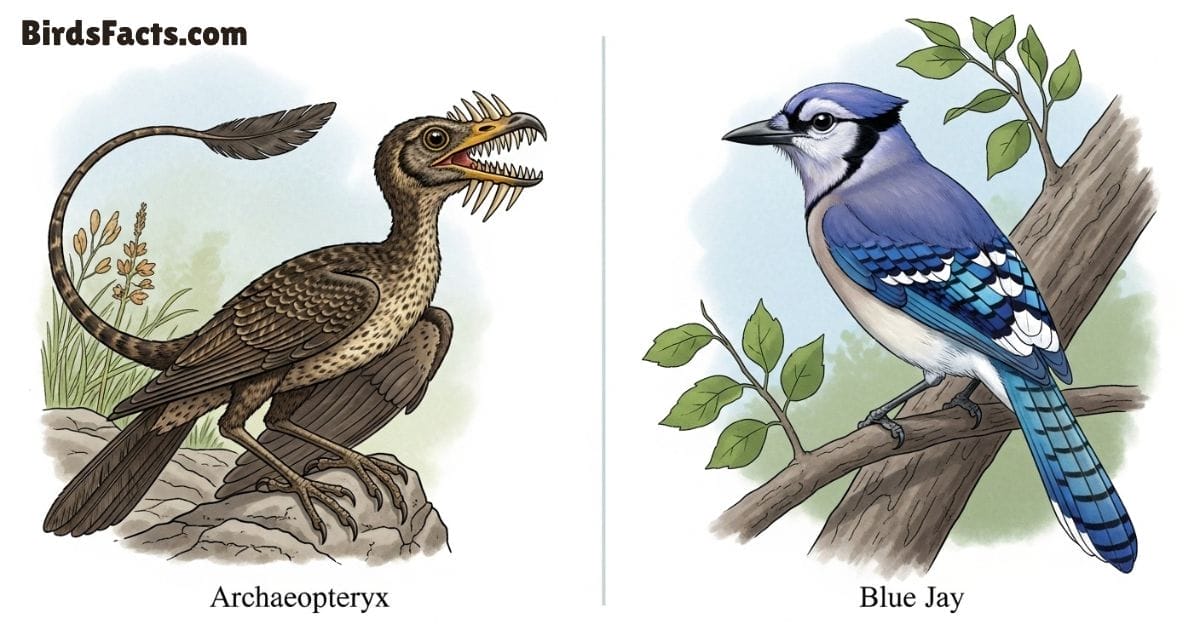
“Side-by-side illustration showing an ancient toothed bird and a modern toothless bird with a beak, highlighting evolutionary changes and advantages.”
To Answer The Question Do Birds Have Teeth It Is Important To Understand Why Modern Birds No Longer Have Them Millions Of Years Ago Early Birds Had Teeth But Over Time Evolution Favored Toothless Beaks Losing Teeth Offered Several Survival Advantages.one Major Reason Was Weight Reduction. Teeth Are Heavy And Require Strong Jaws Which Make Flying More Difficult. By Evolving Beak only Jaws Birds Became Lighter And More Agile In Flight. This Allowed Them To Escape Predators Travel Long Distances And Hunt More Efficiently another Advantage Was Faster Reproduction. Without Teeth Chicks Could Hatch And Grow More Quickly.
The Egg Tooth Helped Young Birds Break Out Of Their Shells And After Hatching Parents Could Feed Them Soft Easily Digestible Food Without Worrying About Chewing.finally Dietary Adaptability Played A Role. Toothless Beaks Could Evolve Into Specialized Shapes To Suit Different Feeding Habits whether Cracking Seeds Sipping Nectar Catching Fish Or Tearing Meat. These Adaptations Made Birds More Successful Across Diverse Ecosystems.in Summary The Absence Of Teeth Is A Product Of Evolutionary Design. While Some May Ask Do Birds Have Teeth Nature Shows That Birds Replaced Teeth With Highly Efficient Beaks And Other Feeding Adaptations Giving Them An Edge In Survival And Diversity.
How Birds Eat Without Teeth – Grinding, Swallowing, and Gizzard Function
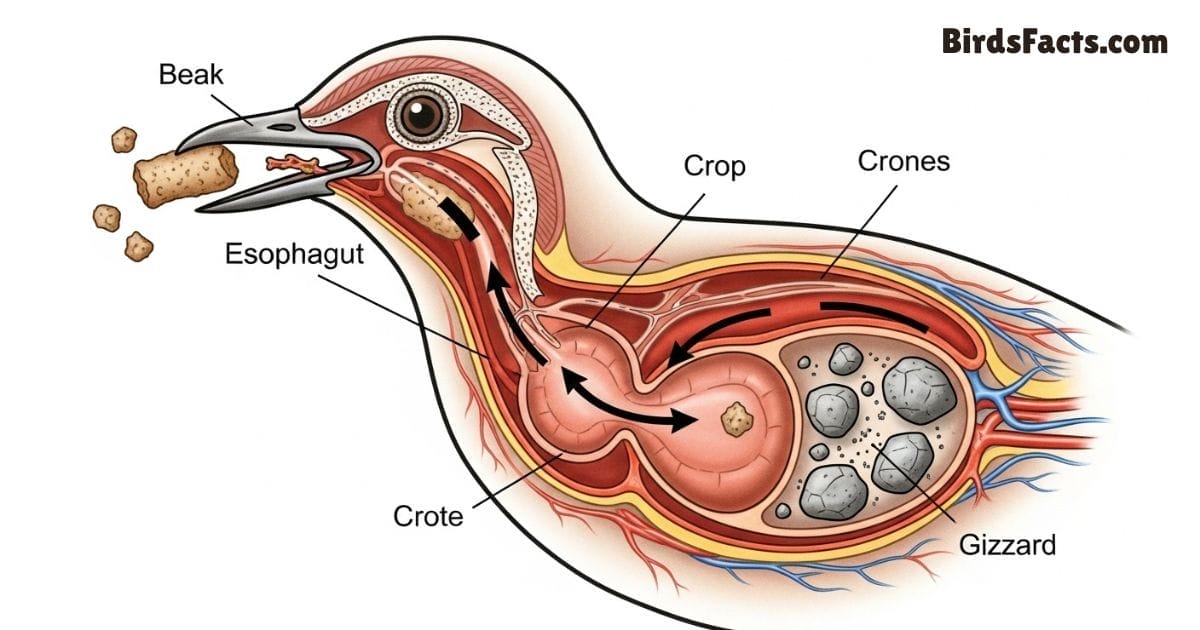
“Diagram Of A Bird’s Digestive System Showing Food Moving From Beak To Crop To Gizzard With Stones (grit) Grinding Seeds Illustrating How Birds Eat Without Teeth.”
Many People Often Wonder Do Birds Have Teeth Because It Seems Impossible For Them To Eat Without Chewing. Modern Birds However Have Developed A Remarkable System That Lets Them Process Food Efficiently Without Teeth. Their Beaks Crop And Gizzard Work Together As A Natural Alternative To Chewing. Do Birds Have Teeth May Sound Like A Simple Question But The Answer Reveals An Amazing Adaptation Birds Often Swallow Their Food Whole Whether Seeds Insects Or Small Fish. The Food Moves Down The Esophagus Into The Crop A Pouch That Temporarily Stores It Allowing Them To Eat Quickly And Digest Later.
The Most Important Organ In This Process Is The Gizzard Birds Often Swallow Small Stones Or Grit That Stay Inside The Gizzard Acting Like Grinding Teeth To Crush Hard Foods Such As Seeds Nuts And Shells Into Digestible Pieces. This Powerful System Replaces Chewing Entirely. Even Meat Eating Species Rely On Stomach Acids And Muscular Action To Break Down Their Meals. Do Birds Have Teeth Might Seem Like A Mystery But Their Beak Crop And Gizzard Combination Proves How Evolution Equipped Them To Thrive Without Needing Any.
Birds That Appear to Have Teeth – Penguins, Geese, Mergansers, and More

“Close-up of a penguin’s mouth showing backward-facing spines, demonstrating tooth-like adaptations that help catch slippery fish.”
Some Modern Birds Give The Illusion Of Having Teeth Which Often Confuses People Asking Do Birds Have Teeth. These Tooth-like Structures Are Actually Adaptations That Help Them Catch Hold Or Process Food Efficiently. They Are Not True Teeth But Serve Similar Functions.penguins For Example Have Backward-facing Spines Inside Their Mouths. These Spines Hold Slippery Fish While Swimming Preventing The Prey From Escaping. They Work Like Teeth But Are Made Of Keratin Rather Than Enamel.geese And Swans Have Serrated Edges Called Lamellae Along Their Beaks. These Ridges Allow Them To Cut Plants Grip Food And Sometimes Even Defend Themselves. Their Tooth-like Appearance Is Useful For Grazing And Feeding In Water-rich Environments.
Mergansers A Type Of Fish-eating Duck Have Saw-like Ridges On Their Narrow Beaks. These Serrations Act Like Tiny Hooks Helping Them Catch And Hold Slippery Fish. Even Without Real Teeth These Birds Can Hunt And Eat Efficiently Thanks To These Adaptations.other Species Like Some Parrots And Raptors Use Strong Hooked Beaks To Crush And Slice Food Fully Replacing The Function Of Teeth. These Examples Show That While The Answer To Do Birds Have Teeth Is No Birds Have Evolved Clever Alternatives To Handle Food Effectively.
Comparison Between Birds and Animals With Teeth – Mammals, Reptiles, and More

“Comparison of a bird with a beak, a mammal with different types of teeth, and a reptile with sharp teeth, showing how birds survive without teeth while mammals and reptiles rely on them.”
When People Ask “do Birds Have Teeth?” They Often Compare Birds To Other Animals Unlike Birds Most Mammals And Reptiles Have Well Developed Teeth That Serve Essential Functions. This Comparison Highlights How Evolution Has Shaped Different Feeding Strategies For Survival Mammals Usually Have Several Types Of Teeth Incisors Canines Premolars And Molars That Allow Them To Chew Food Thoroughly Before Swallowing. Lions Tear Meat With Sharp Canines While Cows Grind Grass With Flat Molars. Teeth Are Essential For Mammals’ Digestion And Feeding Behavior. In Contrast When We Ask Again “do Birds Have Teeth?” The Answer Lies In How Evolution Replaced Teeth With Specialized Beaks Perfectly Adapted For Their Diet And Survival.
Reptiles Often Have Simpler Sharp Teeth. Crocodiles Lizards And Snakes Use Their Pointed Teeth To Catch And Hold Prey Rather Than Chew It. Their Digestive Systems Like Birds Rely Heavily On Stomach Acids To Break Down Food But They Still Maintain Teeth For Gripping And Tearing. Do Birds Have Teeth? The Answer Is No; Birds Lost Their Teeth Millions Of Years Ago. They Swallow Food Whole And Rely On Their Beaks Crop And Gizzard For Digestion. Lightweight Beaks Improve Flight Efficiency And Allow Dietary Specialization. This Difference Shows That Birds Evolved A Unique Way To Survive Without Teeth While Mammals And Reptiles Depend Heavily On Them Making The Question Do Birds Have Teeth A Fascinating Glimpse Into Evolution’s Creativity.
Frequently Asked Question (FAQs)
Do Any Birds Have Real Teeth Today?
No All Modern Birds Are Toothless Though Some Have Tooth-like Structures.
What Is An Egg Tooth?
A Small Sharp Bump On A Chick’s Beak Used To Break The Eggshell During Hatching.
How Do Birds Eat Without Teeth?
They Use Beaks Swallow Food Whole And Grind It In The Muscular Gizzard.
Which Birds Appear To Have Teeth?
Penguins Geese Mergansers And Some Raptors Have Tooth-like Ridges Or Spines.
Why did birds lose their teeth?
Evolution Favored Lighter Skulls For Flight Faster Reproduction And Dietary Adaptability.
Conclusion
After Exploring The History Anatomy And Adaptations Of Avian Species The Answer To Do Birds Have Teeth Is Clear Modern Birds Do Not Possess True Teeth. Ancient Species Once Had Them But Evolution Replaced Those Teeth With Specialized Beaks Designed For Precision And Efficiency. These Beaks Along With Internal Organs Like The Crop And Gizzard Allow Birds To Hunt Eat And Digest Food Effectively Without Chewing.Interestingly Even Though The Answer To Do Birds Have Teeth Is “no” Birds Still Show Remarkable Tooth-like Adaptations.Hatchlings Use A Small “egg Tooth” To Break Their Shells While Adult Species Rely On Serrated Beaks And Keratin Ridges To Grip Prey Or Process Seeds.In Conclusion When We Ask Do Birds Have Teeth We Uncover How Evolution Shaped Beaks And Digestion Into Powerful Tools For Survival. Teeth Disappeared Millions Of Years Ago Replaced By Lightweight Beaks And A Unique Digestive System Innovations That Helped Birds Become One Of The Most Diverse And Adaptable Animal Groups On Earth.
Also Read


